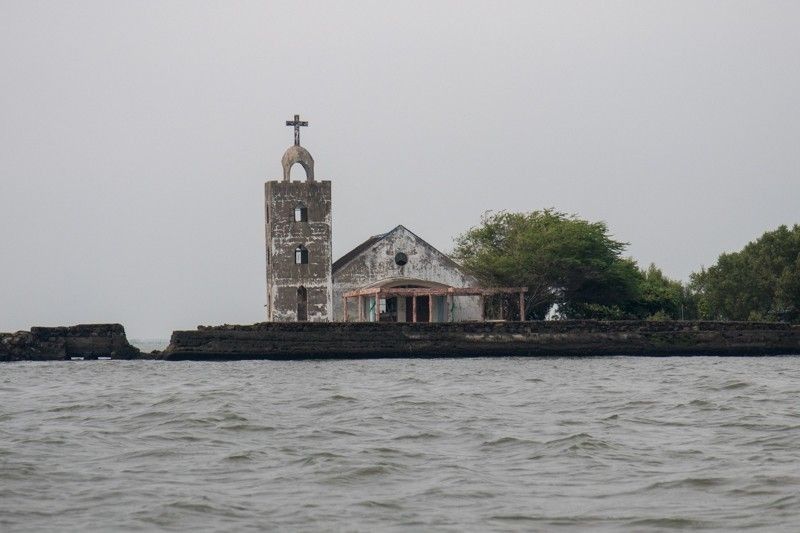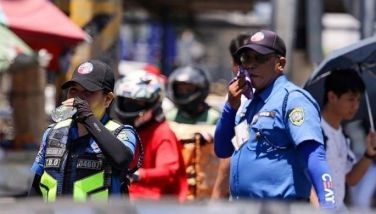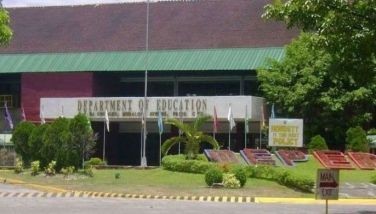Taliptip fishers, groups file writ of kalikasan vs Bulacan airport project

MANILA, Philippines — Bulacan fishermen and civil society groups asked the Supreme Court on Tuesday to compel the government to protect marine ecosystems and resources in Manila Bay that would be threatened by the construction of a sprawling airport city complex in the province.
Former residents of Barangay Taliptip in Bulakan town, Oceana Philippines and two other petitioners urged the Supreme Court to issue a writ of kalikasan against the San Miguel airport project in Bulacan.
A writ of kalikasan is a legal remedy for persons or organizations whose right to a balanced and healthful ecology is violated or threatened.
The petition asked the Supreme Court to stop the reclamation of Manila Bay, and save fish and crustaceans species, endangered migratory birds, mangroves and marine ecosystems in the area.
“The petition is to stop the further destruction of fishing grounds and marine habitats such as mangroves and wetlands in Manila Bay and for our government agencies, respondent agencies and project proponents to protect our environment and our people’s environmental rights,” environmental lawyer Gloria Estenzo-Ramos, Oceana vice president, said in a briefing.
The respondents are Department of Environment and Natural Resources DENR Secretary Roy Cimatu, Environmental Management Bureau Central Luzon Regional Director Wilson Trajeco, Department of Transportation Secretary Arthur Tugade, San Miguel Aerocity President and CEO Ramon Ang and Silvertides President and CEO Hercules Galicia.
Commentary: Postcards from a threatened coast
Reclamation of mangroves, wetlands
Spanning 2,500 hectares, the P738-billion New Manila International Airport and its adjacent airport city will be built over Barangays Taliptip and Bambang in Bulakan town, covering the mangrove and mudflat ecosystems, the petitioners said.
“Reclamation, even it if it’s not mentioned in the recognized projects of the Philippine Reclamation Authority, is what will happen to the construction of the airport. They really have to reclaim land and partially submerge areas,” Gregorio Tanaka Viterbo Jr., one of the petitioners’ counsels, said.
Residents said the clearing of mangroves in the area, which is part of northern Manila Bay, began in 2018. More mangroves have been trimmed since.
Mangroves provide a number of critical ecosystem services. They help protect communities from waves and cyclones, filter pollution and sediment and serve as a breeding ground for marine species. In the battle against climate change, they also play an important role by sequestering carbon.
The petition stressed that the loss of ecosystem services is both a “short term and long term effect” of reclamation.
“The long lasting effect of reclaiming the entire area on the ecosystem services is that these ecosystem services won’t be there anymore. No more fishing, aquaculture and no more mangroves to protect the coastline. So the area will be subjected to greater natural hazard such as storm surges,” the petition read.
‘Adverse’ effects
The petition said the conversion of Bulakan waters into an airport will also affect the spawning of sardines and will lead to the decline in aquaculture production and fish catch. The airport—which will be built in a “key bird area”—may also adversely affect migratory and resident waterbirds, including endangered species.
Other adverse impacts of the project include land subsidence, storm surges and earthquake-induced ground shaking and liquefaction, the petition pointed out. The reclamation is also seen to exacerbate flooding in the area.
To address environmental concerns about the project, San Miguel Corp. planted 8,000 mangrove seedlings in a 10-hectare coastal area in Hagonoy. It aims to cover 76 hectares of coastal area. But mangrove expert Jurgenne Primavera said this effort means nothing, as the mangrove reforestation target should be at least 3,100 hectares.
Aside from the adverse effects on bird population, marine habitat and increased risks of climate impacts, the petition stressed that environmental laws required to be enforced and should regulate the airport project have been violated or circumvented.
“Up until public and private respondents address and resolve concerns brought about by the impact of dump-and-fill activities such as aquatic pollution, marine habitat degradation, impairment/loss of a globally important waterbird site, loss of sardine spawning grounds, loss of mangroves and wetland area, storm surges, liquefaction and other earthquake-related hazards, sea level rise, flooding, land subsidence; spirited and scientific opposition will linger,” the petition said.
- Latest
- Trending


































